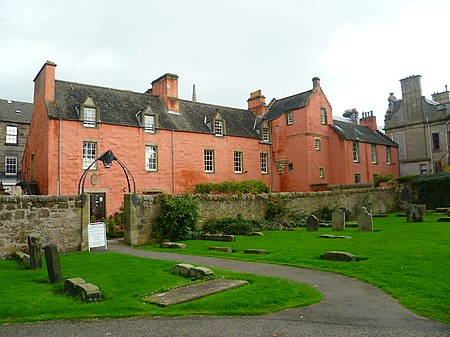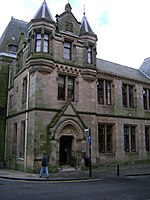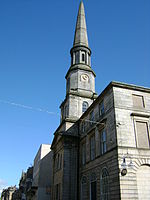Abbot House, Dunfermline

Abbot House is the oldest secular building in Dunfermline, Scotland. Lying in the shadow of Dunfermline's great abbey church, the core of the building is 16th-century. A heritage centre until August 2015, the centre closed following failed attempts by Abbot House Heritage Centre Trust to find alternative funding.In March 2016 it was announced that the Carnegie Dunfermline Trust had taken over ownership of Abbot House, and that they intend to re-open the building to the public. In November 2016 it was announced that Fire Station Creative had been earmarked as the preferred operator, although plans had yet to be finalised and no indication of a possible re-opening date was given. In May 2017 it was reported that a re-opened Abbot House would provide a cafe, restaurant, meeting rooms and suites, and that it was the intention to re-open the cafe "as soon as possible".In July 2018 the Carnegie Dunfermline Trust provided an update which stated that 70% of the funding for reopening Abbot House had been secured.
Excerpt from the Wikipedia article Abbot House, Dunfermline (License: CC BY-SA 3.0, Authors, Images).Abbot House, Dunfermline
Maygate, Dunfermline Central Dunfermline
Geographical coordinates (GPS) Address Nearby Places Show on map
Geographical coordinates (GPS)
| Latitude | Longitude |
|---|---|
| N 56.070395 ° | E -3.463143 ° |
Address
Maygate
KY12 7NE Dunfermline, Central Dunfermline
Scotland, United Kingdom
Open on Google Maps










